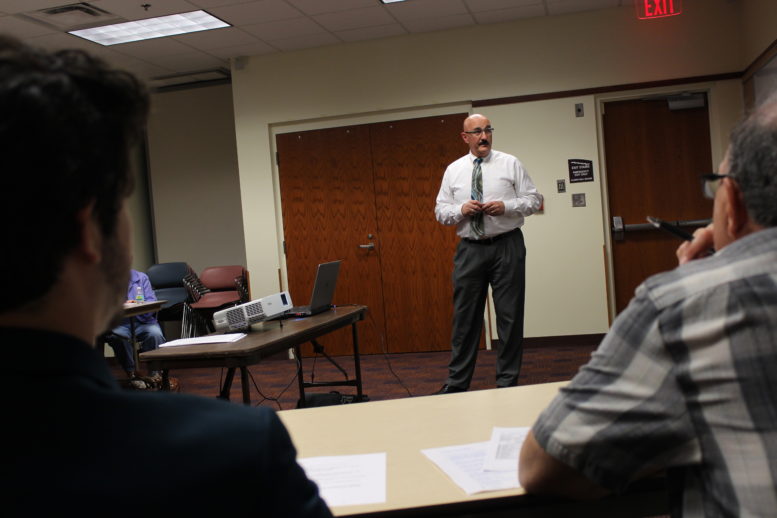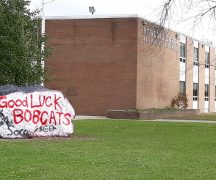By DAVID DUPONT
BG Independent News
Teenagers from poor families in Bowling Green are apparently not taking advantage of the free and reduced priced lunches they are eligible for.
School Superintendent Francis Scruci said at a forum for residents of Wards 1 and 2, that while about 30 percent of students in the district are eligible for free and reduced lunches, the number that actually apply at the high school “drops dramatically.”
The numbers start to go down in middle school and the decline continues as students get older.
Those students, Scruci said, don’t want to be identified as poor. That they don’t get the food they may need because of that is “sad.”
The district has done everything it could to make sure those students cannot be identified at the lunch line. Yet a suspicion persists “that everyone’s looking at them and everyone knows.”
The percentage of students receiving free and reduced lunches varies by elementary school with about 40 percent of Crim students eligible, 30 percent Kenwood and 20 percent at Conneaut.
For some students, the breakfast and lunches they eat at school are the main meals they get, Scruci said.
He said that many times people who rely on public assistance programs will move to Bowling Green because of the proximity of social service agencies.
Scruci was at the meeting to discuss the building prospects for the district’s facilities plan.
The district has: two aging elementary schools, and one, Crim, that was recently renovated; a high school that needs extensive work; and a new middle school.
District officials plan to take up to 18 months to work with residents to decide how the community wants to proceed. He said he will not put a plan on the ballot that’s cooked up by administrators and school board.
“If the community wants to do nothing, we’ll do nothing,” he said. If the community wants to build a new high school or central elementary school, then that’s the direction the district will take. Or if residents express support for renovations then that will be the plan.
“I don’t want to go through this process unless I know what this community can and will support,” he said.
He believes that everyone wants to support education, but he also knows some people may not be able to pay higher taxes.
The district will not take state aid for any project, he said. Because the state considered Bowling Green an “affluent” district, it would only pay for 11 percent of any project, and then it would call the shots on how the project would be done.
In the meantime, work will begin as soon as school’s out on the placement of a modular classroom at Conneaut. Given the school may be replaced, he said, it makes no sense to add onto it.
One of the possibilities is for all the elementary schools to be consolidated into one building, possibly on a “super” campus near the middle and high schools.
While that would mean the loss of neighborhood schools, Scruci said, “we’re hearing more and more that’s not an important piece.”
Few students walk to school, he said.
A single elementary would offer many benefits, both in terms of efficiency allowing grade sizes to be evened out and educationally by enabling greater collaboration among teachers at each grade level.
If that were to happen, he expects that Kenwood and Conneaut both could be sold and Crim could be repurposed for a central administration building and additional pre-school programming.
City Councilwoman Sandy Rowland said placing the central office would be an important boost for the east side of town.
Scruci said that spending on schools represents “the best return on tax dollars” since quality schools attract families and that in turn helps boost property values.
“We have seen families go to neighboring school district because of our facilities,” he said.





